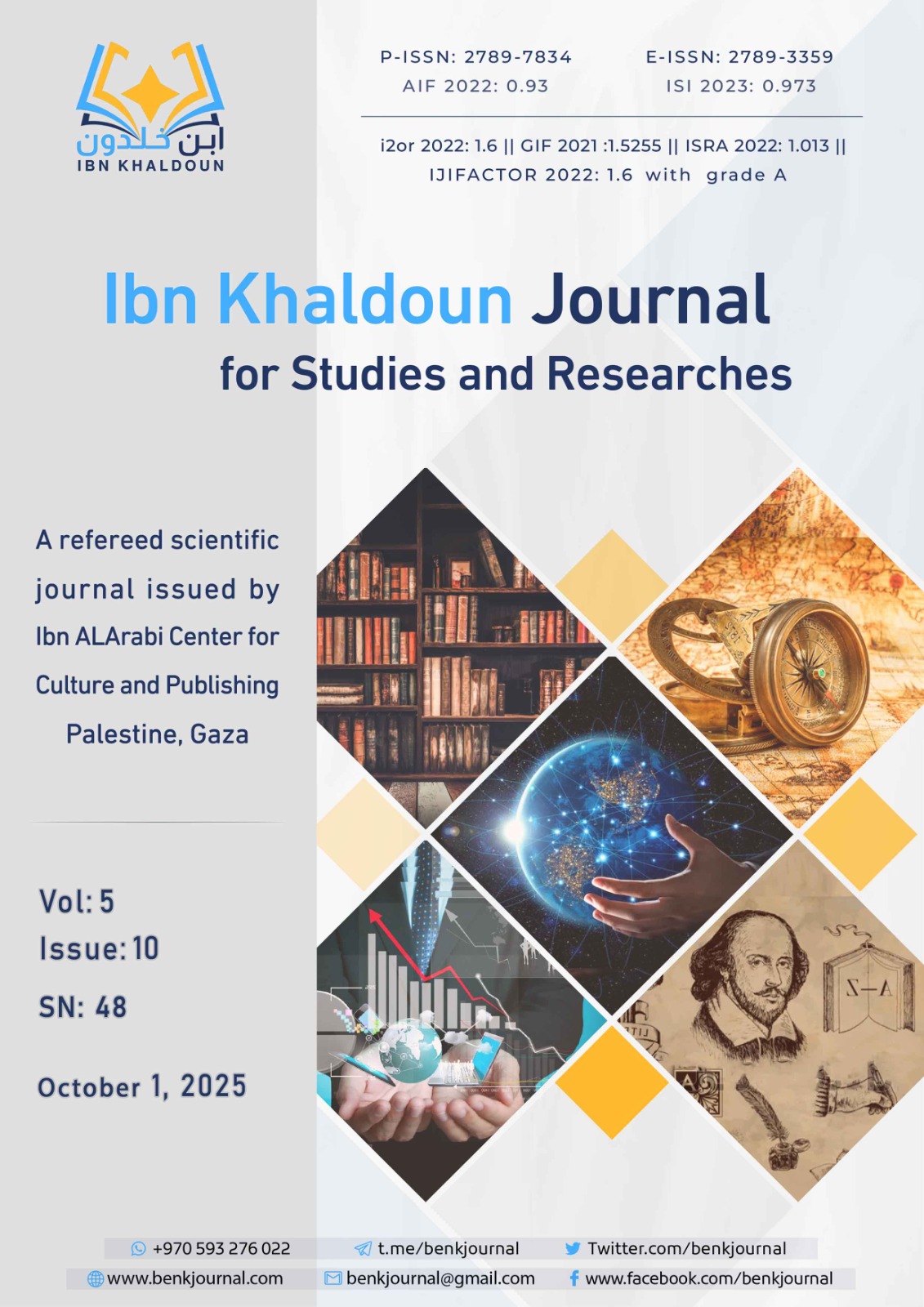Using the NARDL Model to Test the Twin Deficits Hypothesis in Sudan: An Econometric Study (2007-2021)
Main Article Content
Abstract
The study aimed to use a Nonlinear Autoregressive Distributed Lag (NARDL) model to test the hypothesis of a dual relationship between the budget deficit (BD) and the current account deficit (CAD) in Sudan during the period 1990-2021. It also sought to apply modern statistical methods such as co-integration and the error correction approach to test causality, thereby examining the relationship in both the short and long terms.
The research problem was represented in the following questions: Does an increase (decrease) in the budget deficit (BD) lead to an increase (decrease) in the current account deficit (CAD) in Sudan during the period 1990-2021 in the short term and the long term? Is there a symmetrical relationship between the two variables in the long term?
The statistical results demonstrated the existence of a mutual causal relationship between the budget deficit (BD) and the current account deficit (CAD) in Sudan within the period 1990-2021, in both the short term and the long term. The results also revealed a non-symmetrical relationship between the two variables in the long term. This implies that the economic policies adopted by the state to address the deficit in one of the two accounts will have a positive effect in reducing the deficit in the other.
Accordingly, the study recommended adopting economic policies aimed at reducing the deficit in each account separately, by addressing exchange rate distortions, implementing an import substitution policy, increasing the state’s reserves of gold and hard currencies, strengthening oversight over the production and export of gold, and preventing its snuggling. The study also recommended reducing government expenditures through the establishment of productive projects to increase income and reduce unemployment, stabilizing inflation, increasing public sector investments, carefully timing tax increases, and enhancing actual production capacity, with an emphasis on coordination among these policies.
Article Details

This work is licensed under a Creative Commons Attribution-NonCommercial 4.0 International License.
References
أولاً: المراجع باللغة العربية:
- الرشيد، طارق محمد (2015م): تحليل البيانات باستخدام برنامج (E.VIEWS)، الخرطوم، مطبعة إميسا الحديثة.
- شيخي، محمد (2011م): طرق الاقتصاد القياسي، جامعة ورقلة، ط1، الجزائر.
- ابدجمان، مايكل (1985م): الاقتصاد الكلي: النظرية والسياسة، تعريب: منصور محمد إبراهيم، الرياض: عنيذة للنشر.
ثانيًا: الأوراق العلمية والرسائل الجامعية:
- خليفة، سليمان؛ وآدم، معتز (2024م): تحليل علاقة عجز الموازنة العامة بعجز الميزان التجاري في السودان للفترة 2000- 2022م، (اختبار فرضيتي العجز الكينزي والتكافؤ الريكاردي)، مجلة التطوير العلمي للدراسات والبحوث، المجلد 5.
- محمود، حسن أمين محمد (2022م): اختبار فرضية العجز التوأم في مصر باستخدام منهجية اختبار سببية جرنجر، مجلة البحوث المالية والتجارية، مصر – المجلد 23- العدد 1.
- بسيوني، عبدالرحيم عوض (2022م): المفاضلة بين النموذج الخطي وغير الخطي للانحدار الذاتي ذو الفجوات الموزعة، دراسة تطبيقية، طنطا: مجلة التجارة والتمويل.
- ضيف، أحمد؛ وعيل، ميلود (2020): علاقة عجز الميزان التجاري بعجز الموازنة العامة في الجزائر (اختبار فرضية العجز التوأم 1990-2010م، الجزائر: مجلة معهد العلوم الاقتصادية، المجلد 23- العدد2.
- خالد، رشا؛ عبد فرحان، إسراء؛ وفاضل، شيماء (2019): قياس العلاقة بين عجز الموازنة العامة والميزان التجاري العجز التوأم في العراق للمدة 1980-2018م باستخدام منهجية انجل جرانجر.
ثالثًا: المراجع باللغة الإنجليزية:
- Daniel, S., & Eric, E. O. (2016, September). The twin deficits hypothesis in developing countries, Empirical evidence for Ghana. International Growth Centre, pp. 1-33.
- Dickey, A., & Fuller. (1989). Likelihood ratio statistic for autoregressive time series with a unit root. econometrica, V49, 1057-1058.
- Granger, C., & Bold, N. (1974). Spurious regression in econometrics. Journal of econometrics, 111-120.
- Johansen, S., & Juselins, K. (1990). maximum likelihood estimation and inference on co-integration with application to demand for money. Oxofordbullentin of economic and statistic, V52, 169-210.
- Rao, B. (1994). Co-integration for the applied economics. New Yourk: The mac Millan.
- Pesaran, M. H., Shin, y. and Smith R. J., (2001). “Bounds Testing approaches to the analysis of level relationships” Journal of Applied Econometric, Vol-16, p289.
- Schorderet, Y., (2001). Revisiting Okun's law: A hysteretic perspective, At; https://www.escholarship.org/uc/item/2fb7n2wd, pdf; orgin, repeccitec.
- Shin, Y., Yu, B., and Green Wood – Nimmo, M., (2014). “Modeling Asymmetric Cointegration and Dynamic Multipliers in a Nonlinear ARDL Frame work” in Robin C. Sickles William C, Horrace, (Editors), Festschrift in Honor of Peter Schmidt: Econometric Methods and applications, New York: Springer, p281.





